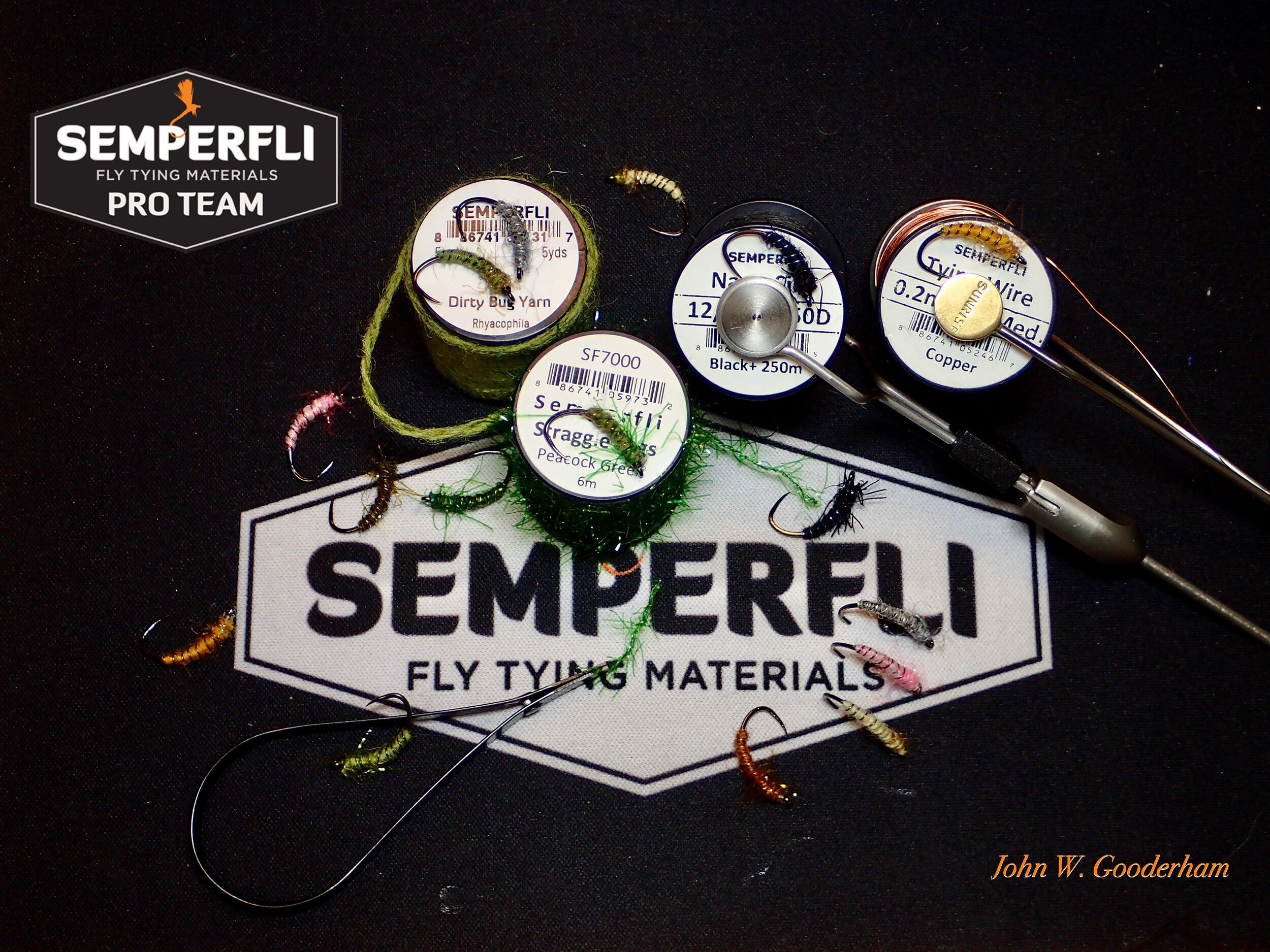The Whatzit is a fly born of necessity. I was looking to design a simple fly to catch multiple species and suggest a wide variety of insect larvae, scuds, or other subsurface food sources. The fly itself isnʼt so much of a pattern as it is a "style" of fly. My concept follows the "same from any angle" approach knowing that the suggestive flies often out-produce the detailed imitations. The great advantage is that the Whatzit can be tied in a variety of colors, sizes, and combinations. For example, the very first prototypes were done with a peacock herl body with wire ribbing. Iʼve since switched to the SEMPERFLI Dirty Bug Yarn for all the bodies for durability and reliable color renditions. Peacock herl can be dyed with the same materials and look completely different - it also does not respond well to Bluegill abuse or Trout teeth. DBY is available in a wide color range, can take lots of punishment, and is easy to work with. For all these reasons, the Whatzit is a winner (just look at the fish photos from the first day), but most importantly is the ability to fish this fly in so many different ways. You can keep the fly on your tippet and try several presentations until you find a productive one. Cast it slightly upstream and allow to dead drift to depth, swing as a traditional wet, retrieve with slow strips, and/or use a Sawyer "induced take" action. Just donʼt look away before your drift is complete! Enjoy this pattern, and Iʼll see you on the stream!
John Gooderham



















